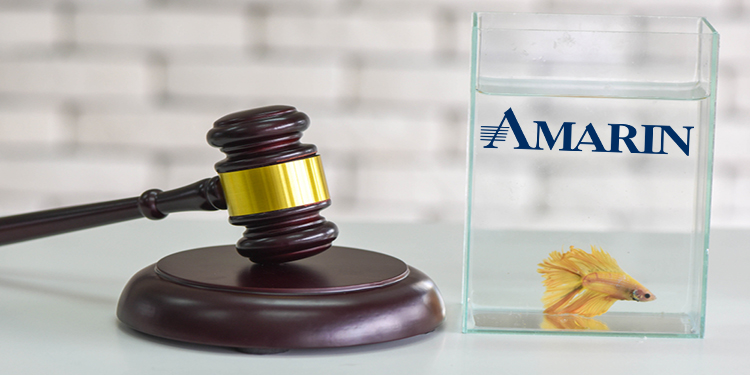It has been a rough couple of months for pharma company Amarin Corporation (AMRN). At the end of 2019, the cardiovascular health-focused name was flying high after the FDA expanded the labeling for its fish-oil derivative designed to treat high triglycerides, Vascepa. However, seasoned market watchers know that in the world of healthcare investing, all it takes is a single piece of bad news to knock a company off its pedestal.
For Amarin, this blow came in the form of an unfavorable verdict on its intellectual property. In March, a district court hit the company with a judgement ruling that invalidated six key patents shielding Vascepa from generic competition on the basis of obviousness.
Representing Northland Capital, analyst Carl Byrnes disagrees with the ruling, pointing to several procedural errors as well as a factual error that emerged during the litigation. According to the analyst, the procedural errors included the District Court’s conclusion of obviousness before considering objective indicia and incorrectly shifting the burden of proof onto Amarin as a result of the former.
Citing Graham vs. John Deere, which has been used as a standard for obviousness during the last five decades, Byrnes believes that when the U.S. Court of Appeal Federal Circuit (CAFC) hears the case for reversal, factors such as the scope and context of prior art, differences between primary art and patent claims, the level of ordinary skill in the art and commercial success will need to be reevaluated.
Speaking to the factual error, Byrnes commented, “The factual error focuses on the state of the prior art relating to pure EPA which had NOT been studied in subjects with severe hypertriglyceridemia (≥500mg/dL) hence the effect of pure EPA on this population could not have been obvious. The latter is further supported, in our view, by prior arts that included several FDA-approved triglyceride-lowering therapies that dramatically raised LDLC levels in subjects with severe hypertriglyceridemia but not in subjects with less elevated triglyceride levels, with the former recognized by artisans and experts at the time to be attributable to the mechanism of triglyceride clearance in this specific population.”
Even though some investors have expressed concern regarding the recent FDA approval of Hikma Pharmaceuticals’ ANDA for generic icosapent ethyl capsules, Byrnes argues that the company wouldn’t launch the product while patent litigation is still taking place, with the CAFC ruling slated for late-2020 or early-2021. It should also be noted that the FDA review of Dr. Reddy’s Laboratories’ ANDA for icosapent ethyl is ongoing.
As the approved and pending ANDA for generic icosapent ethyl doesn’t support the inclusion of cardiovascular risk reduction in its label, which could limit its commercial strength, the deal is sealed for Byrnes.
To this end, Byrnes left an Outperform rating and $15 price target on the stock. Based on this target, shares could soar 114% in the next twelve months. (To watch Byrnes’ track record, click here)
Turning now to the rest of the Street, AMRN’s Moderate Buy consensus rating breaks down into 7 Buys and 5 Holds. However, the $16.29 average price target brings the upside potential to 132%. (See Amarin stock analysis on TipRanks)

To find good ideas for healthcare stocks trading at attractive valuations, visit TipRanks’ Best Stocks to Buy, a newly launched tool that unites all of TipRanks’ equity insights.

